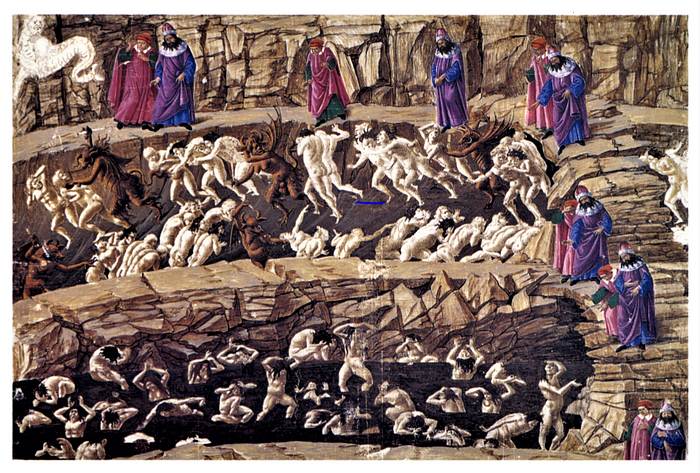In the 15th century, Botticelli (the pioneer of colorful and aesthetically pleasing paintings including The Birth of Venus and Primavera) was commissioned to depict Dante’s Divine Comedy on canvas. Translating words of such a complex narrative was not only an ambitious project but also a time-consuming activity. Unsurprisingly, it almost took a decade for Botticelli to interpret and visualize each canto and create a thematic sequence of drawings.
These drawings were lost for more than 400 years until in the 19th century, eighty-five sheets were found and auctioned by the Scottish Duke of Hamilton to Friedrich Lippmann, then the Director of the Berlin Kupferstichkabinet. The rest seven of the drawings were found in the Vatican with the Map of Hell housed in the Vatican collection.
This article would explore the conception and technique of the Divine Comedy drawings, Botticelli’s pictorial depiction of Dante’s Inferno, and what motivated Botticelli to paint such dark and disturbing drawings of hell. (Read more.)
Tota pulchra es Maria
4 days ago


















No comments:
Post a Comment